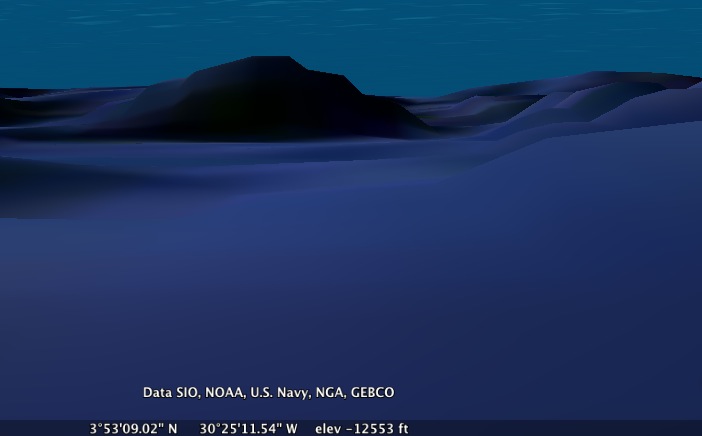They might have split up or they might have capsized
They may have broke deep and took water
And all that remains is the faces and the names
Of the wives and the sons and the daughters.— Gordon Lightfoot, from “The Wreck of the Edmund Fitzgerald”
A storm on Lake Superior drowned the Edmund Fitzgerald. From the way it looks now, a storm over the Atlantic destroyed Air France Flight 447 earlier this week.
A book and a movie nailed the “perfect storm” meme in our heads, and I suppose the label might apply here. Flight 447 was crossing through a region known to weather professionals as the intertropical convergence zone. Storms rise quickly there, and concentrate in a band that runs around the Earth like a broad equator of roiling clouds. While lines of thunderstorms familiar to those of us in temperate zones can run for hundreds of miles along a weather front, these intertropical mothers are different in several senses, not the least of which is that it’s harder to avoid getting tossed around while weaving through them in an airplane — especially in the middle of the night over the middle of an ocean. This is due partly to the widespread and rapid-forming nature of the storms themselves, and partly to the absence of navigation guidance from the ground.
There isn’t any ground underneath. The nearest radar is far beyond the horizon. And, in some cases, such as Flight 447’s, guidance from the air is also lacking. According to that first link (a Bloomberg piece by John Hughes), less than one flight per hour takes the route flown by Flight 447, which was last heard from at 2:14am, local time, over the Atlantic appoximately midway between South America and Africa.
That also puts it over the broad Mid-Atlantic Ridge, a mountain range that runs like a baseball seam between tectonic plates. It’s mountainous down there. Go to 3° 34′ 39.72″ N, 30° 22′ 27.84″ W (3.5777, -30.3744) on Google Earth, drop about 12,500 feet below the surface, and you would see approximately this —
— if it were not also the blacker than the darkest night down there. Good luck finding the flight data and voice recorders. Or anything else that doesn’t float.
My guess is that our best guesses will narrow to some combination of known facts. Chief among these is that the plane was passing through a region of big thunderstorms that had also shown up quickly. I’m guessing that the pilots did their best to avoid the worst of what they could see with their instruments, and failed. Here is a summary of final messages from the plane.
Whether the plane broke up at altitude (we know it depressurized) or went out of control and crashed intact, the terminal moments of the flight must have been frightening beyond description for those on board.
I’m a frequent flyer who loves aviation. I’ve flown enough to be jaded and calm. But thunderstorms still creep me out. One pilot friend told me a few days ago that the last thing you want to do is go through a “hole” between two thunderheads, because turbulence there can be even worse than inside the clouds themselves. When you see thunderheads building, the expansion itself is a kind of wind, and so is what happens to the air pushed aside as the head builds its visible parts.
One wonders if any decisions will be made, based on what we learn from the crash of Flight 447. Will similar Airbus planes be given a new caution? An upgrade to avionics or reporting methods? A new procedural guide for times when scary storms suddenly materialize? Dunno yet. We’ll see.
I’ll be flying back and forth to London next week. I’m looking forward to the flight as well as the work — as I always do. But, like many travelers, I’ll not be quite as calm about the weather.


Leave a Reply